Source: Newin
On October 24, Tesla released an unexpectedly strong third-quarter financial report, with revenue increasing 8% to $25.2 billion, gross profit increasing 57.14% to $2.772 billion, and net profit increasing 1.624 billion to $2.183 billion.
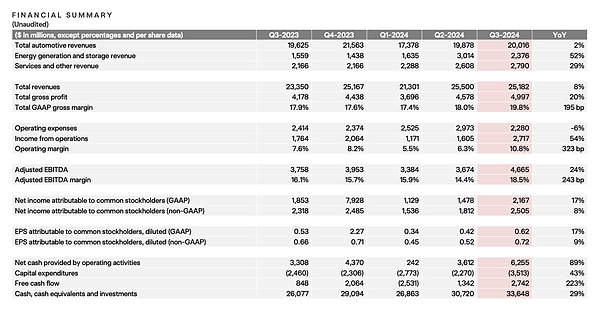
Tesla's third-quarter profit mainly came from a 2% year-on-year increase in car sales revenue, a 52% year-on-year increase in energy production and storage business, and a 29% year-on-year increase in service revenue including the super charging network.
The revenue growth was primarily attributable to the following factors:
Lower costs per vehicle, including lower raw material costs, freight and one-time expenses;
Gross profit growth in businesses such as Energy and Services, which increased profitability;
Increase in FSD revenue, which drove overall profit growth;
Increase in vehicle deliveries, which further drove profitability;
Increase in regulatory credit income;
Reduction in operating expenses, as the company cut costs and reduced overall spending;
The average selling price of the S3XY models decreased, and despite the increase in deliveries, the decrease in selling price had a certain negative impact on profits;
Earlier this year, Tesla laid off nearly 10% of its employees, about 14,000 jobs, resulting in a 6% drop in operating expenses to $2.3 billion.
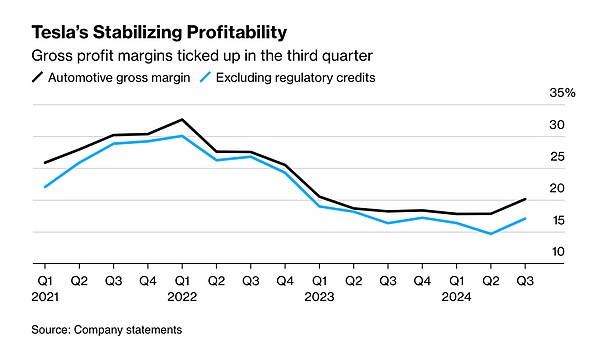
Musk remains optimistic about Tesla's prospects in 2025, predicting that car sales will increase by 30% next year, and the stock price soared by more than 20%, and pointed out that Tesla will launch more affordable models.

Tesla's total production in the third quarter was about 469,800 vehicles, a year-on-year increase of 9%, of which Model 3/Y remained the main pillar, while the production of other models increased significantly, up 91% year-on-year, and the total delivery volume was about 462,900 vehicles, a year-on-year increase of 6%.
Cybertruck, which started shipping at the end of last year, has achieved positive gross profit margin as production has increased. Although the quarterly report did not disclose specific production and sales, according to the recall documents, Tesla has delivered at least 27,000 Cybertrucks.
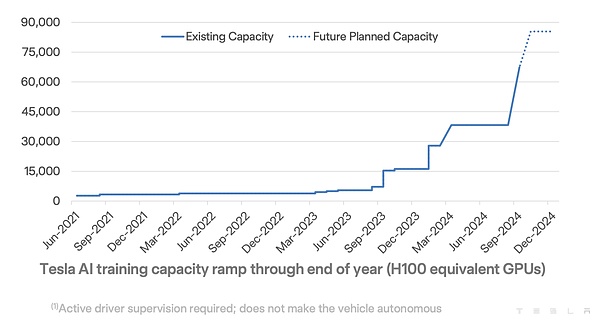
Tesla has also updated FSD 12.5, focusing on improving safety and comfort. This version has increased the number of parameters by 5 times thanks to the increased amount of data and training computing power, and will continue to expand in the fourth quarter.
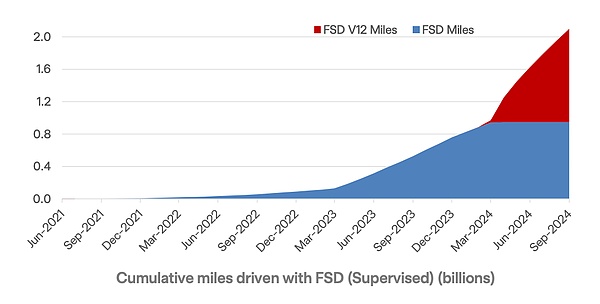
From June 2021 to September 2024, the cumulative mileage in FSD supervision mode has gradually increased, with a total cumulative mileage of about 180 million miles, and the cumulative mileage of the FSD V12 version is about 55 million miles.
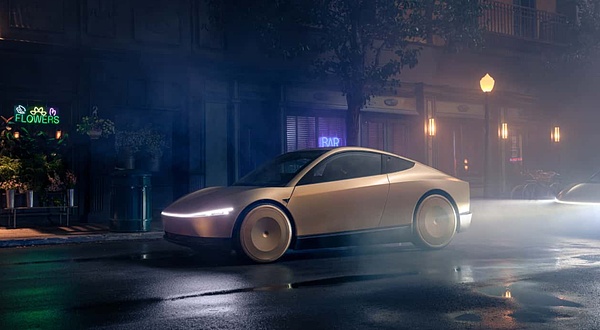
In addition, he also said that Tesla will produce Cybercab self-driving taxis in 2026, with the goal of producing at least 2 million vehicles per year, but did not disclose the specific time.
Musk also mentioned that he plans to launch Robotaxi services in California and Texas next year, but the plan will also face huge regulatory challenges.
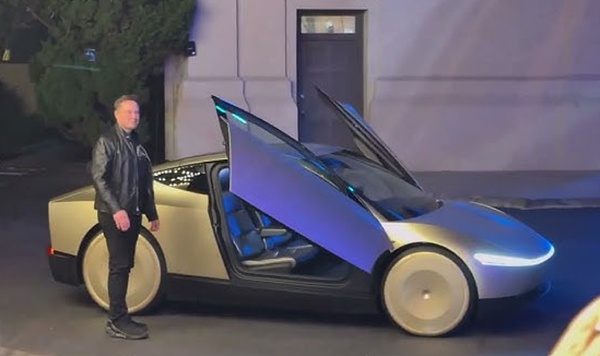
Take California as an example, Tesla needs to obtain a self-driving car road test permit issued by the California Department of Motor Vehicles and an operating license issued by the California Public Utilities Commission before it can operate Robotaxi services in the state.
Tesla also said that 29,000 Nvidia H100 chips have been installed at the Texas Super Factory, and the number will increase to 50,000 by the end of October. These chips are mainly used to train the AI system that the autonomous driving technology FSD relies on.
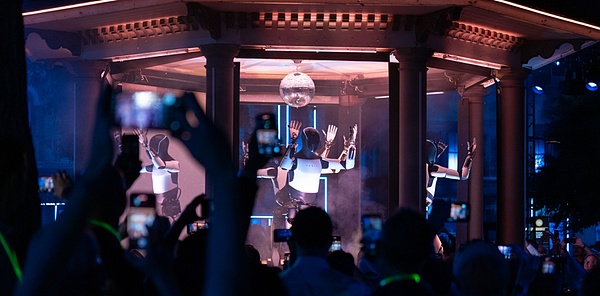
Musk said in the conference call that xAI has significantly helped the development of Tesla's AI technology, especially in expanding the scale of model training. Tesla can refer to xAI's practical methods.
Last week, the two companies have realized the sharing of AI resources and some equipment, aiming to efficiently configure and share resources to support large-scale training.
Musk also said that xAI focuses on AGI and super AI, a super artificial intelligence company dedicated to understanding the "true nature of the universe". Its mission is to seek truth, while Tesla focuses on manufacturing self-driving cars and autonomous robots.
 Miyuki
Miyuki











